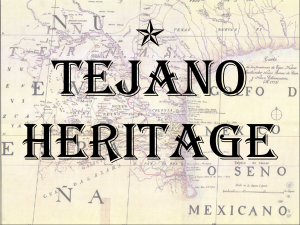Programs
Mini Polly Rodriguez Wall Exhibit
Exhibits |
The “Polly Rodriguez” Wall Exhibit is a snapshot of the major eras of J.P. Polly Rodriguez's life. The images and citations per storyboard capture First: his birth in 1829 in “Coahuila Y Texas”, Mexico. In 1840, his family moves to San Antonio, Texas and he is apprenticed to become a gunsmith in 1842. By 1845, he has become an expert marksman and recognized as an accomplished “frontiersman”.
The Second Panel illustrates “Polly” becoming a surveyor by 1847. At this time, he joins a small and accomplished group of men that legally harness the frontier with grant surveys. The images and citations display The Alamo restored by the US Army for a Quarter-Master Depot and signal the 1849 expedition to locate a road from San Antonio to El Paso. In this event “Polly” serves as one of the lead guides in this exploration. Then in 1851, General Persifor F. Smith hires “Polly” as head guide, scout and interpreter for the army. From 1851 to 1855 General Smith is tasked to build a Second Line of Defense. “Polly’s” role is to help find suitable locations for these forts that will have water, foraging and native building materials close by.
The Third Panel begins in 1855, with his service with 2nd Calvary that comes from St. Louis to take care of the Indian problem. ‘Polly” serves as Head Combat Scout and Guide for Camp Verde in Kerrville County. The hostile Apache and Comanche Indians of the frontier were the troops' foes. In 1858, a charge out of Camp Verde with Polly as scout perform a hot-pursuit against the Indians. This group ultimately received a “Presidential Citation” for combat valor and gallantry.
The Fourth Panel starts in 1861 with “Polly” becoming a Texas Ranger at the beginning and through the end of the Civil War. Photos of period weapons, badges and other accessories depict the “tools of the trade”. In this panel, the 1864 Bandera County Courthouse image illustrates the place which served as Justice of the Peace from 1865 to 1874.
The Fifth Panel depicts his 1858 residence, known as the Fort, which provides us with an understanding of his ranching interest in Bandera, Texas. The photo taken in 1868 displays a cattle round-up on his ranch along with him and his cowboys. Then, other photos show the beginning of “Polly, Texas” with a General Store, Post-Office and School House.
The Final Panel provides a sense of his Methodist conversion in 1877, his appointment as a Circuit Rider and ordination as a reverend. Also, a photo of “Polly Chapel” is provided that was built out of limestone in 1882. This chapel is an official Texas Historical landmark. The photo of the train is to illustrate his last road traveled upon his death in 1914. Per his last wishes, his body was laid to rest on his ranch in Bandera, Texas
The description of the panels are as follows: 18”w × 48” hi x ½” thick Illustration Board. Six panels comprise this mini-exhibit. Most illustrations and photos are color or a simulated sepia tone. Panels are to be placed on walls with a hanging system.





